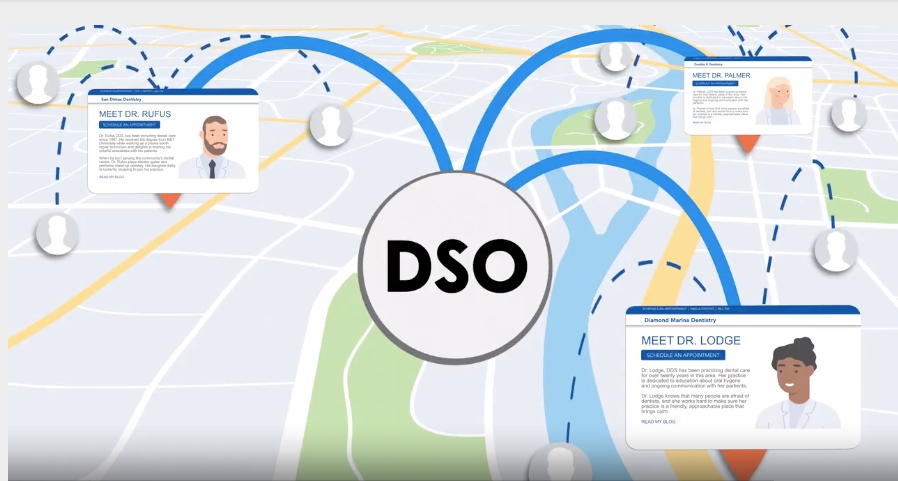8 Fresh Digital Storytelling Ideas for Business (+ Examples)
Editor's Note: This blog was updated for relevance and accuracy on January 21, 2024. You will be hard-pressed to read a blog about marketing trends...
Defining ‘digital storytelling’ versus ‘video content’ is like categorizing ‘squares’ and ‘rectangles.’ Digital storytelling is video content, but not all video content is digital storytelling.
Digital storytelling is the specific practice of utilizing video production planning to tell stories in a deeper, emotional, and personal way. Developed and popularized by StoryCenter, the intent of digital storytelling is to democratize tools that were once only available to a select few in the broadcasting and entertainment industries. As a part of this mission, StoryCenter developed the Seven Elements of Digital Storytelling, which served as a building block for the countless stories they’ve helped tell over the years.
As the internet becomes more and more crowded with video content fighting for audience attention, digital storytelling’s power has only become clearer. People connect with stories, and so finding ways to turn mere video content into emotionally resonant stories is crucial to making sure your message has the power to break through the static. Mastering the Seven Elements of Digital Storytelling will help ensure that you’re using the tools of communication effectively and give your content the best chance of connecting with your audience.
Digital storytelling is about people. When considering the point of view, we are asked to think critically about two questions:
A digital story is a primary source document of someone’s lived experience, and people tend to feel strongly about their experiences. Stories take a position, even if that position is as benign or as simple as, “I liked that.”
From a video content and marketing perspective, telling digital stories in this way requires rethinking the usual suspects of marketing video, like an overarching ‘About Us’ video. A well-constructed company video plays an important inbound marketing role on a website, but really think for a moment - do you see About Us videos running as TV commercials? Not often. Instead, you see stories from the perspective of people, how brands and products play a supporting role as a solution to their problems, and you remember them more vividly as a result.
A company can’t tell you how it feels about an overview of its services and role in the economy. However, a company founder can tell a story about the challenges of establishing the business and why they were convinced that it was the right thing to do. Employee or client testimonials allow someone to tell their story, with the help of your company starring in an important supporting role. Or, like in this example for Twin Cities Habitat for Humanity, where a volunteer describes their experience being a part of an organization’s mission:
This approach isn’t without challenges - how do you tell a story about an ancestor, or a historical event, for example? Finding a point of view that tells their story through the recollections of those closest to the figure, or someone whose family has a shared oral history of the event, creates a human connection to the past that a third-person narration cannot.
Carefully considering point of view helps to hone in on the human story beneath the marketing copy, and creates a solid foundation for the rest of the elements to build on.
The key part of the second element is drama. Humans have been magnetically attracted to the emotional journey that drama creates, from the amphitheaters of ancient Greece to the massive media production industry today. In terms of digital storytelling, a dramatic question is an overarching thought in the mind of the viewer as they watch:
After finding a point of view for a story, considering the overarching dramatic question helps to further winnow down the focus of the piece. For example, if the point of view of a story is an employee tasked with solving a major problem for a client, including a preamble about her unrelated career history prior to their role would undermine the drama of the story. Instead, the piece should be focused on only elements relevant to the dramatic question posed to the audience - Is she going to be able to solve this problem?
Consider this example produced with Project for Pride in Living. The dramatic question hanging over the piece is, “How can our characters escape cycles of challenge and underemployment?” As the piece progresses, the answers reveal themselves and create dramatic satisfaction in the viewer.
The third element draws the starkest line between digital storytelling and video content by utilizing the power of emotion. Marketing video content can be informative, it can be entertaining, it can be useful, but it often steers clear of the subjects and concepts that evoke strong emotional reactions. Above any of the other elements, emotional content is the distinguishing component of digital storytelling.
This can be difficult for a company or brand to approach, especially considering that the phrase ‘emotional content’ sounds suspiciously like a polite way to describe heated discourse on polarizing topics. But don’t mistake ‘emotional’ for ‘controversial’ - it’s just feelings.
Making a viewer feel something about what they’re viewing creates a stronger connection between your audience and the storyteller. Whether the storyteller is sharing their personal grief from a lived experience, their disgust with inactivity on a social cause, or their insecurity with their place in the world, the audience empathizes and feels those feelings alongside them. As the story progresses, and grief turns to relief, disgust turns to hope, and insecurity to contentment, the audience shares in this journey as the dramatic question of the story is resolved.
See for yourself in this video for the Aim Higher Foundation.
The resolution of the story comes with emotional energy that can be channeled into action. A message of hope and resilience invites a viewer to take part in ensuring the positive outcome can be replicated for others, while a story that ends on negative or unresolved feelings could inspire the viewer to take action to steer the narrative toward a more positive outcome. While many digital stories will resolve without a specific call to action, the dramatic resolution of a story told well is the perfect time to invite the viewer to take part in the next chapter.
While not necessarily a list that needs to be followed in order, the Elements of Digital Storytelling do tend to be organized related to the video production process: three pre-production elements, one production element, and three post-production elements. As element four is the sole element that focuses on the actual production of the media, it can be safely assumed that point of view, the dramatic question, and emotional content have all been considered by the time you’re thinking about who should be the voice of the story.
Because of the tailored nature of those three elements, it’s clear why element four is The Gift of Your Voice, not The Gift of a Voice. Who better to tell a story than the person who lived it? And after considering the value of a personal point of view, having the storyteller speak directly to the audience builds credibility and a direct connection to their emotional journey.
The biggest challenge with this approach is making the storyteller feel comfortable and empowered to be the voice of their story. Because we are saturated with media (especially professionally produced media that masquerades as user-generated or ‘reality’), it’s easy to picture what a storyteller looks and sounds like, and just as easy to find reasons to exclude yourself from that image.
But as you can see in this example created for Catholic Charities of St. Paul and Minneapolis, there is a level of authenticity in hearing the story come from Markeus in his own words.
Like the previous element, the fifth element encourages the storyteller to use the audiovisual experience to its fullest emotional potential. Like drama, music has been used to guide the mood of humans for millennia, and it can be put to use building upon the emotion of a story. The expectation of music in digital storytelling is so ingrained that even the absence of it, when deployed strategically, can have a devastating impact.
The soundtrack is an unsung partner to the visuals and the content. For example, the music in this 'About Us' video for this private community, Champion Hills, instantly sets the tone for the beautiful place.
More often than not, music’s impact is felt subconsciously when used correctly but noticed conspicuously when used incorrectly. After all the work spent to narrow, craft, and personalize a story, the last thing you want to do is undermine that work with a soundtrack that fails to meet the emotional needs of the content. And despite the internet providing more access to high-quality, royalty-free music than ever before, sifting through pre-recorded music to find a track that fits the emotional beats of your story is one of the most frustrating challenges of digital storytelling.
But when it works, it really works.
While music is obviously a major component of a video’s soundtrack, it’s not the only piece to consider. The use of sound, whether naturally captured during a video shoot or created in post-production to create a specific effect, helps to envelop the viewer into the piece.
While most of the elements of Digital Storytelling relate to taking full advantage of the tools made available by software, the sixth element calls for a bit of prudence. In the best-case scenario, a digital story will have tons of available content, either in the form of video b-roll, photos, or graphic elements, as well as the option to build on this content with stock footage and licensed content. There are stories that would benefit from flashy montages of footage, quickly cut to fit in as much imagery as possible. Most won’t. Besides, if the credibility and emotions from the story are coming from your chosen point of view and their voice, it makes little sense to bury them underneath video or photo content just because it exists.
For most stories, the highest impact will come from pairing parts of the story together with the most relevant and impactful imagery. In this example produced for Adoptee Hub, use of b-roll and photography was limited to keep the focus on Leslie and Ami as they told their stories.
One way to help ensure the economy of content remains in balance is to weigh every addition against the story’s dramatic question. Asking ‘Does adding this enhance or detract from the drama of the story?’ helps to ensure anything added to the story only serves to strengthen the piece as a whole.
The final element of digital storytelling deals with the speed at which the story’s narrative unfolds. It might seem like this element, after all the choices made about the story’s chosen point of view and the storyteller’s voice, is somewhat baked in.
Through the power of digital editing tools, the pace of a story is entirely within the control of the creator. Slower delivery and fumbles can be removed, a messy storytelling flow can be corrected, and even entire sentences can be reconstructed and carefully concealed under b-roll footage and graphic elements.
Like with the last element, there’s a difference between something that can be done and something that should be done. Part of the benefit of a speaker’s voice is their delivery, so removing pauses to quicken the delivery can weaken the dramatic effect. In other situations, a fast-paced delivery from the storyteller could undermine the drama, making it necessary to carefully cut and space sections of speech to maintain the drama.
Beyond just the cadence of a speaker, the subject matter of a video, the choice of music, available content, and the intended audience all affect the pacing of a digital story. In this example created for Boyum Barenscheer, two angles cover the interview to allow for pauses to be removed and different ideas to be stitched together coherently. Notice where the choice is made to switch camera angles, and just as importantly, where the choice is made to remain on one angle.
After an in-depth look at each of the elements, one thing that should stand out is how these elements interlink with each other. Sorting the list into which elements correspond to the phases of video production is doable, but not very useful in practice.
For example, knowing your dramatic question early in pre-production would be very helpful, but in some documentary-style productions, you might not know what material you’ll have to work with until after the shoot. Likewise, pacing will largely be driven by the choices made in post-production, but considering how a story should be paced early on will help ensure enough materials are collected in production to support the goals of the story.
Rather than a checklist to follow, the elements of digital storytelling should be viewed as guiding principles, considered at every stage of the production process. When viewed in this way, even videos that fall closer to the ‘video content’ rectangle than the ‘digital storytelling’ square can be strengthened into stronger, more personal stories. The world of video content gets busier every day, but understanding the full range of rhetorical and emotional tools at the disposal of the digital storyteller gives your message the weight and connection necessary to stand out.

Editor's Note: This blog was updated for relevance and accuracy on January 21, 2024. You will be hard-pressed to read a blog about marketing trends...

No matter where you’re from, there is one thing we all share in common: The love of great stories. At StoryTeller, our job is to find inspiring,...

Since the dawn of humanity, people have used images to communicate complex ideas in visually intriguing, stimulating ways to others. Today, companies...